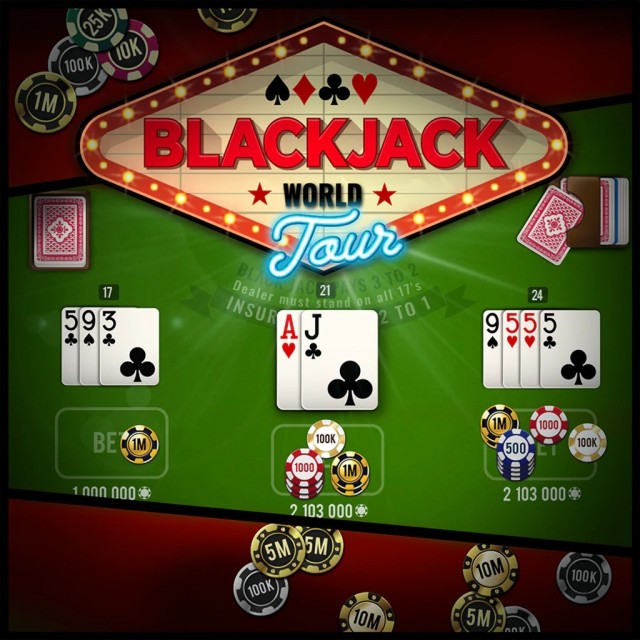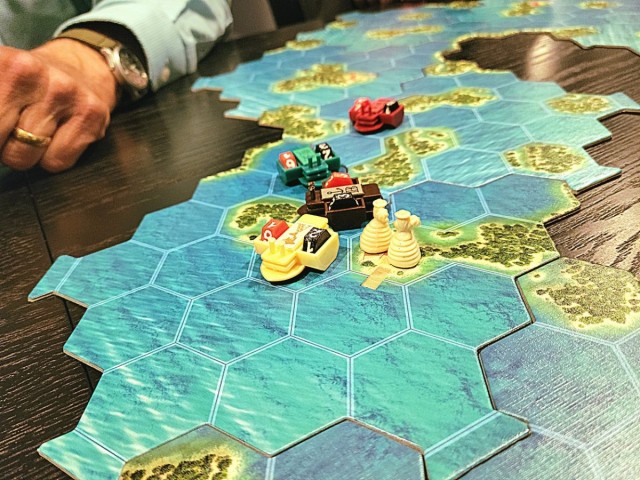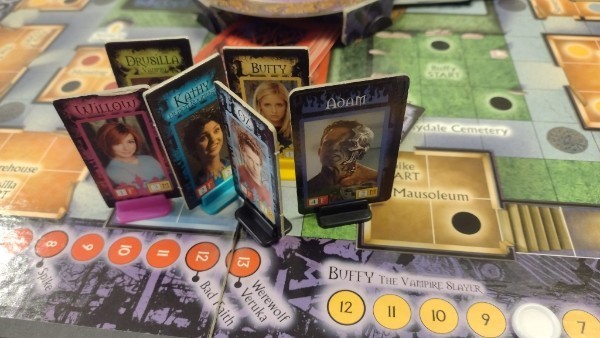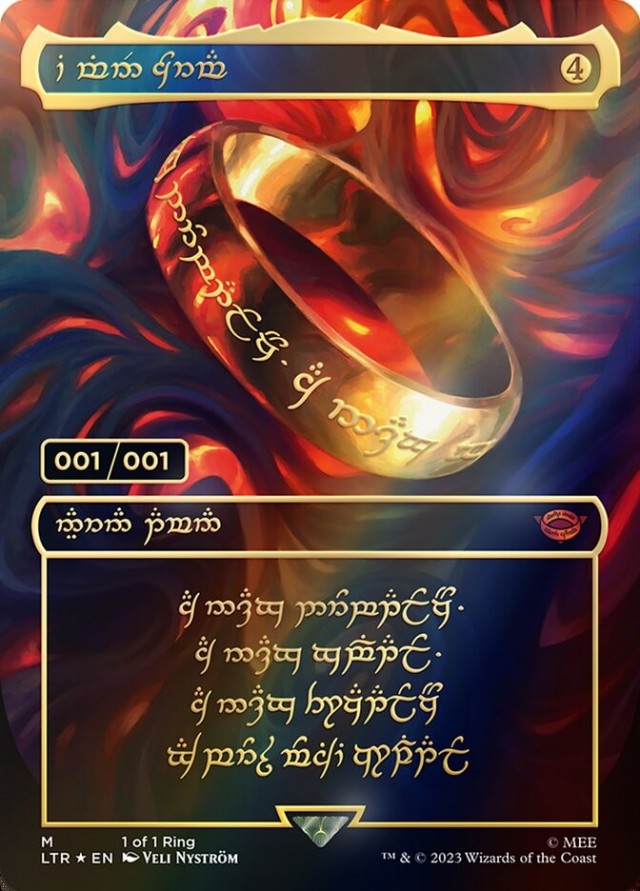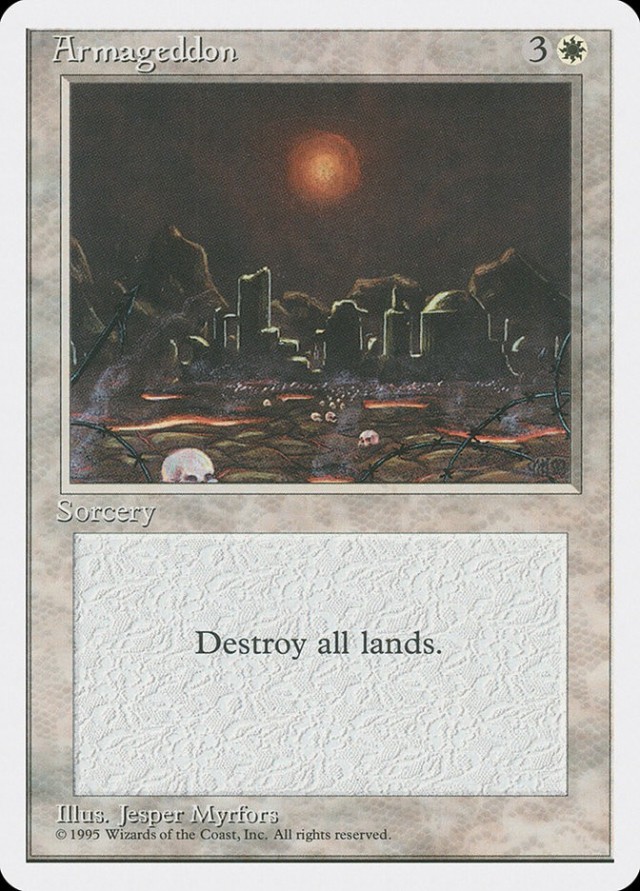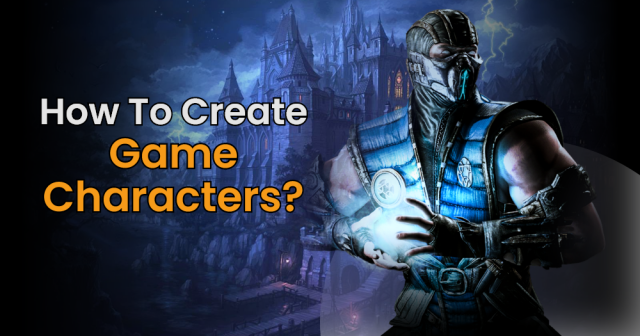Well FA:TtiesI went to the trouble of writing this up for BGG, so I figured I'd post it in a blog here. You guys have probably already heard all about my love of COM since I wrote an early impressions thing, but it's a year later, I'm still playing the hell out of it and loving it so...
A Long Sloppy Love Letter to Clash of Monarchs
This is a review that has been simmering for a long time. I’ve finished about 4 campaigns of this game and it has now been over a year, so I definitely have the perspective now to write this. I’d say most of my PBEM gaming time has been devoted to Clash of Monarchs (COM). Clash of Monarchs is a 2-4 player CDG simulating the Seven Years War in Europe. Well, I can now tell you, after many, many hours of play, that COM is absolutely a genius game: an extremely playable monster size game. Not a monster mapwise but rather gameplaywise and in campaign length. It was designed as a labor of love by Bob Kalinowski over a period of many years and the time that was taken with it, in the same way as my favorite game, Here I Stand by Ed Beach, really shows. The game is relatively polished and is well tested and balanced. Don’t necessarily trust the commentators who have barely played the game or glanced at the rules proclaim how difficult it is to play and that the rules are X pages long. After even a modicum familiarity is reached, the mechanics really fall away and allow you to think about what you want to do and how you want to do it from a strategic standpoint. I rarely consult the rules while playing and can do almost anything a commander in the Seven Years War would want to do with his armies.
So what is Clash of Monarchs and why is it such a great game?
Components and Production
This is a big game, and the components are a mixed bag. The cards are wonderfully designed and look great. The colors of the counters, powers and cards really make the game look quite nice on the table. In particular, the period art that was chosen for all the counters and the cards is amazing. In fact, I would say COM has the most beautiful cards I’ve ever seen in a CDG. On top of that, almost all the leaders, even the minor ones from the minor powers (there are so many leaders in this game, many of which you won’t see in a single game), have unique, accurate art for them on the counters. Even the different army’s SP counters are unique and vary in color and costume depending on the country they are from and who they are. Cards and counters are really an A+ effort with great attention to detail.
On to the controversial map. According to the BGG and CSW comments, apparently the map is so bad that it has basically caused people to give up on the game and give it bad reviews. The map is really a tale of two uses and I think I have some insight into it, though no excuses. I have played COM mostly via VASSAL PBEM and live play. In that context, the map looks great. It looks good and the borders are quite clearly delineated. It even has some stylish touches like the colour palette of the various spaces and their space ownership. Sounds great right?
Then you pull it out of the box and try to play it in person. It’s obvious, at least to me, that this map was made on a computer screen, played via VASSAL, etc, and then something was lost in translation to the paper. It is dark. It’s not unplayable, as others seem to have suggested, but it does make playing the game and figuring out the passages between the point to point spaces much more difficult that they should be. Whether something happened to Mark’s art on its way to the printers or there is just something about the palette that doesn’t transfer between a computer screen and the physical product, I do not know, but the map is definitely the weak point of the production. Don’t let this scare you away, however. And definitely don’t let anyone tell you the map makes the game unplayable or anything of the sort. It is playable, even in person with the art. It is not, however, close to ideal.
No False Choices in Cardplay
Clash of Monarchs is a CDG in the vein of Hannibal rather than Paths of Glory (POG). Forces are counted in SP and leaders, not armies with particular characteristics, are activated depending on their initiative rating. So Daun, while a powerful commander, is hard to activate and takes 3 op or better cards to move---just as in real life, where Kaunitz in the Austrian command had to frequently plead, cajole and threaten Daun to take any action at all. By contrast, Frederick will be continuously activated, moving all over the board and running circles around the Austrians with his 1 rating.
It is here where COM really shines. COM is a CDG where gameplay, not cardplay, dominates. Cards are extremely important---a look at the Austrian hand will determine whether they can expect to roll their large armies under Daun and Loudon or Lacy forward or if they will be forced to take slow cautious admin marches and stay mostly on the defensive and reaction. On the other hand, event play and stringing events together is not the focus of play, as it is in POG. In fact, cards are never removed from the deck except as an (ingenious) function of a country going bankrupt! There are a few one time events but most events are available at any time and are not overly powerful or unique. In general, there is no card in COM that is a must play or game decider in the same way as when Italy comes out in POG or Twilight Struggle scoring cards are dealt, to say nothing of Shifting Sands and its game deciding Malta cards. Nearly all event cards are balanced in such a way as to make their play a legitimate question of strategy or situation vs. gameyness. In general, there is very little gameyness in COM. This is a CDG that non-CDG players can enjoy.
My favorite example from the game is leadership of the Austrian army under Charles. Historically, Charles was a relatively poor leader who after some crushing defeats to Frederick was stripped of command by Austrian general command, which then drastically reformed and improved the general staff. In COM, this is represented by a few cards whose play is contingent on Charles and the Austrian army suffering crushing defeats. The play of these cards may seem like a no brainer---as historically, they improve Austrian tactics and leadership quite a bit. On the other hand, crushing defeats are incredibly damaging and while Charles is not a great leader, he is not modeled and stereotyped as an absolute piece of garbage either, like other CDGs might do. As a result, I have had games where Charles was quickly crushed and then the general staff completely reformed very early in the game. On the other hand, I am now finishing a campaign where Charles was never crushed, the Austrian army never badly beaten and the staff never reformed. This meant I didn’t have access to some nice/fancier tactics chit and cards but on the other hand meant that I had been playing well *and* had not been unnaturally incentives to seek out a bad defeat. The choices in COM are rarely obvious, which is something I greatly value about Bob’s design. This is not true, and bugs me, in other many other CDGs.
Another important point about the lack of gameyness in card play is that COM’s design gives players plenty of nice options even when they don’t have a card to play. In any given turn, you can give your armies admin marches which are slow speed marches that can’t enter enemy’s squares or siege but which allow you respond to the enemy’s moves even when you don’t have a card. Additionally, every turn you can move small forces in addition to your card play, taking away a lot of the odd corps and small armies sitting behind the lines if they aren’t worth activating that takes place in other CDGs. The rules do not force generals to sit around, get surrounded and not react if they don’t get the right hand of cards. It just forces them to be far more cautious and not make as bold or offensive of moves.
Anyway, there are a huge variety of strategic options and those options are not dictated simply by the card play. Some creative things I have seen in my time playing COM are: an Austrian army enter the field near France in Germany, Loudon never take the field and Lacy instead leading the 2nd Austrian army all game, Charles as army commander most of the war, Russia never entering Silesia, Frederick wounded twice in a game, a monster combined Russian/Austrian army in Silesia, a worthless France commanded by the worst leaders in the game, an agile and powerful France commanded by Broglie and D’Estrees all game, Swedish intervention in the war, Danish intervention in the war, no outside intervention in the war… etc etc. There are a million other things I have *not* seen which I hope to see in future plays such as Saxony entering for Prussia instead of Austria or France winning the colonial battle. This is a game of almost infinite plausible variety and in that respect is quite amazing for a CDG, which usually can feel quite deterministic.
Procedural, But Not as Complex as Purported
Describing the rules themselves, the bottom line is that they are quite pretty procedural. And that procedure, at first, seems daunting. The order of play is extremely important and colors the way in which you do things. There are plenty of steps of procedure to get through during each player's turn and the play order is very important. Thankfully, the play aids are quite exhaustive and whoever was the developer, I believe Chris Janiec, must have realized that the order of play was the most important thing to COM that could go wrong for players and ruin their time with the game. As a result, the play aids are there to help you with order of play at every turn and do a wonderful job speeding your internalization of the rules.
Combat rules work with a nice variety of effects and range of outcomes. Even battles, routs and unexpected results are all possible. The tactics chits add a very nice element of uncertainty and planning, not to mention a little color and narrative to what is otherwise a completely strategic/operational game. The use of the red box leaders, who can engage in the real game changing bloody battles, is particularly noteworthy and works very nicely to differentiate battles in France and Germany against battles between Daun, Frederick, Loudon and the Russians in the East.
Stepping away, all in all, I think this game is actually quite a bit easier and lighter than it is getting credit for, based on comments on CSW and BGG. I think this is largely because of the first impressions of the rulebook. When you first look at the rules, they are overwhelming. But the system, especially the actual movement and combat is actually quite clear and unadorned. Supplies, KK move, card play, minor activation, rally for each power. In most turns, you will simply be activating a force, with or without a card. There aren't very many exceptions and you are nearly always doing the same thing. There are complications, like interception, withdrawal, etc, but they are all logical and easily managed. If you are worried about complexity in COM or have read nasty comments, I recommend that you do not be discouraged. It is slightly hard to pick up but not nearly as difficult once you play a few turns. It becomes very automatic quite quickly.
Even the supply rules, often a bane for games like this, are not terribly difficult once absorbed. Don’t go too far ahead, keep that forward depot secure in fortressless areas and keep units on the supply train or you will get raided. That strategic advice is simple, straightforward and the rules reflect it.
That said, one must say something about the diplomacy rules and also the subsidy rules. They are underexplained and quite confusing. There have been updates and comments by the designer and developer since, but I must say it is the one area of the rules that leaves the most to be desired.
Another negative for the rules, but in my opinion unavoidable in a game this detailed, is the accounting. There is a good deal of accounting that must go on once a year, during winter/spring. None of it is hard accounting, granted, but there is plenty of tallying up and rolling on tables that goes on at the end of the year. This can drag the game down to a crawl for a few minutes. That said, once a year is really not terribly often and once you’re done with the accounting you can jet back into the card play, which moves quickly, with all the (hopefully) great decisions you made during the winter and spring. There is also accounting that goes on with counting income and number of armies on the map. This is all a snap if you’re playing the VASSAL module by Joel Toppen, one of the best VASSAL modules currently out there, but I could see some frustration if playing in person. Not overwhelming frustration but certainly a bit of time taken out from the all out war going on during the summer/fall phases.
Overally, this game may be chromed, but it is not overchromed and it is not a monster in the negative sense of the word. After you play your first scenario or two the game will go very quickly.
1 Hour or 20 Hours? Scenarios and Number of Players
Like many monsters, this game gives you a variety of scenarios to play for games of varying lengths. Unlike most monsters, this game succeeds at it. The short scenarios play quickly and cover a year or two at most. The campaign game covers the entire war from start to end with all the powers. The design includes a scenario at all lengths in between and allows you to start and end in almost any year.
Additionally, this game is quite unique in that it is a completely different game when played as the campaign vs. the shorter scenarios. As a campaign, it is definitely a total war of attrition. It is a dismal game--and I mean this is the best possible way because this was a completely dismal war for all involved. The financial part of the game and slow drag of down of the critical commodity, monarchical will, takes on a grim inevitability in the long campaign. Countries go bankrupt and take way too much credit. Countries drop out of the game entirely. Etc. I think the designer accomplished exactly what he wanted to in that respect. As a shorter scenario game it is a decisive game of maneuver culminating in major field battles and finally siege to squeeze out a win. The contrast is stark and kind of cool.
The game is finely balanced. Many games of this length are more about the experience rather than the game. Not so with COM. This is a game, not just as simulation. It was obviously tested extensively by experienced players and the designer repeatedly. I can mainly speak to the campaign game, which comes out quite even and can hang in the balance until the last few rolls. I suspect the scenarios are also nicely balanced based on the amount of care that went into the one or two I’ve played and the campaign.
The game is also quite flexible in its number of players, between 2 and 4. Prussia, Austria, France/Russia and Britain. Each player draws his own hand, so in a two player game each player can have two hands. This isn’t a terribly elegant way to handle it, but I’ve never had much problem with it in practice. I would give two words of warning with respect to player numbers: first, if you are playing the campaign or longer game with more than 2, you *must* start with the 1757 scenario. Starting with the 1756 scenario means that some players will not be able to play until 30 minutes to an hour into the game. Bad times. This is easily remedied by starting in 1757 or perhaps even better 1758, when all players are in the game and active (recall the COM scenario can be custom made to start at any year).
The other issue with respect to player number is that I remain unconvinced that the British/Hanoverian player is as engaging a position as the other players. This game is probably best as a 3 player, though I personally would gladly play Brit/Hanover in a 4 player game. Sure, the British can win many battles and trounce the French, so it is fun. But I consider his options relatively limited compared to the greater diversity in the other positions, certainly in contrast to the royal rumble going on between Prussia and Austria but even with comparison to the juggling act of constraints going on in the France/Russia position. It’s not that I think the game shouldn’t be played with 4 players, I think Britain can be quite fun especially if he stays engaged with the Prussia player, giving advice and evaluating that theatre. But overall, I think I would have to argue that it is a less engaging position than the other three. Ideal players… hard to say. As long as the Brit players knows what they’re getting into and the other players are playing fast, probably best 4 player. But for new players or slow players, I’d advise playing 3 players at most.
Discussing Criticism and Summing It Up
To counter some commonly heard criticism, a lot of the elements many individuals are discussing as extraneous or too much chrome (KK raids, supply, offseason recruiting, etc) really only gain their meaning in the longer campaign game or after several plays. Many of these details barely play into shorter scenarios, and in that sense can be taken or left if one doesn’t like the extra detail. There are a lot of subtle things going on in COM, the importance of which only dawn on you later. Take, for example, the +1 bonus the Austrians and French get when sieging---this is probably one of the most important things driving the game, which only becomes clear to you after a campaign or two. Continuing the complaints, the map, while especially disappointing in person, is not unplayable and the rest of the components are fantastic. In addition, if you do a lot of your play of games like these in VASSAL, as many do, the map looks great and looks like the nice art that it is.
If you have managed to get to the end of this, I would most of all emphasize why I play this game and why you should too. Not because it is a tight, balanced and relatively easy to play monster game with tons of historicity and character. Though it is! The main reason I keep coming back is I never know what will happen and completely new things happen every game, but all within the realm of plausibility. I have never had the same game twice—once in a lifetime events (probabilistically) will happen, different combinations of powers may intervene or a certain power may become, shockingly, completely dominant over another leaving one side scrambling. If I had more wargamer friends, I would constantly be regaling them with stories about Clash of Monarchs. It is a narrative, story worthy game that can be a one night or monster size game and a very tight design. This is one of my go to games and I would suggest it to anyone I felt was a wargamer and would be interested in a great, non-gamey, incredibly exciting CDG.
Overall, this is a fantastic game. Don’t be intimidated
 Games
Games How to resolve AdBlock issue?
How to resolve AdBlock issue? 